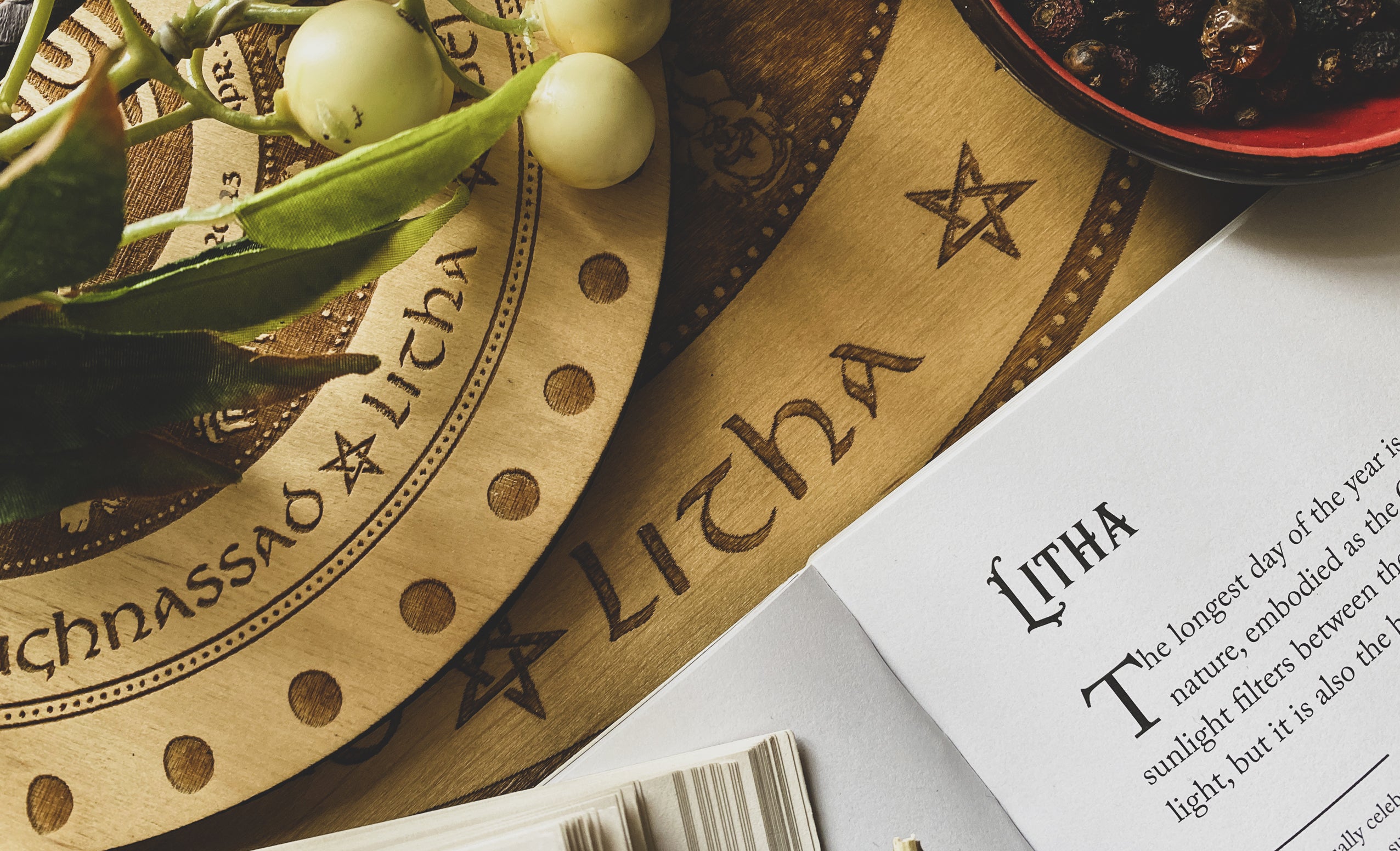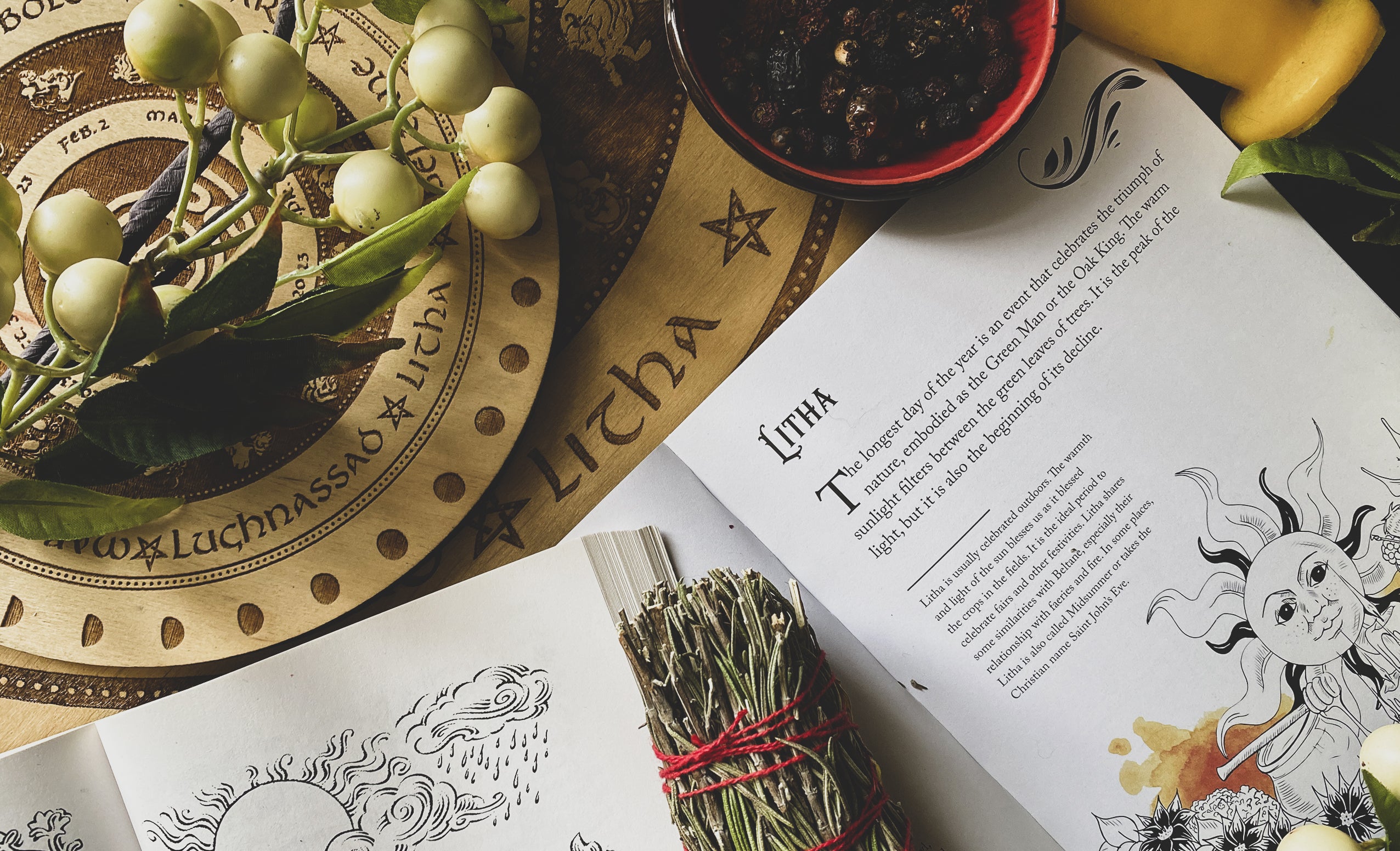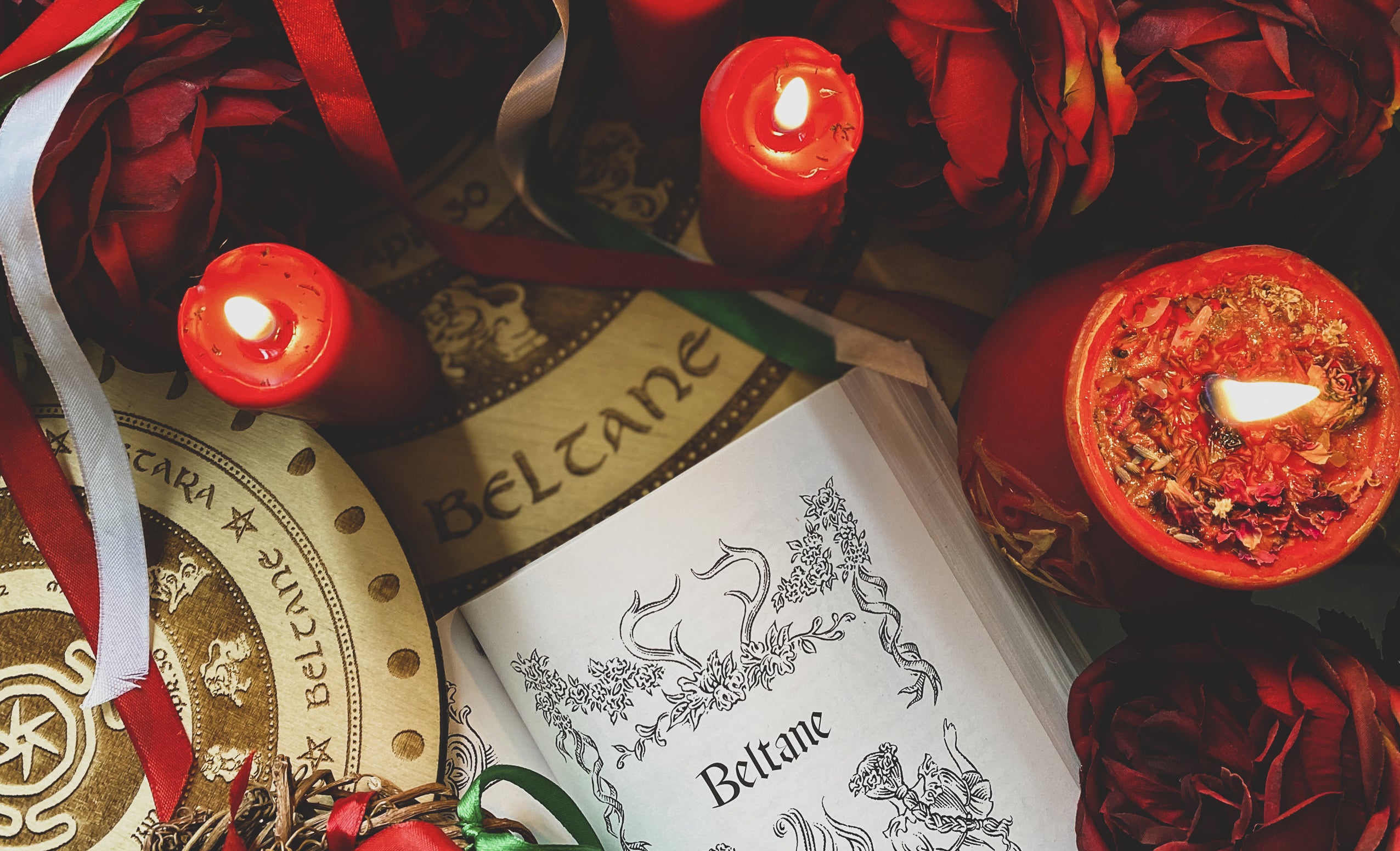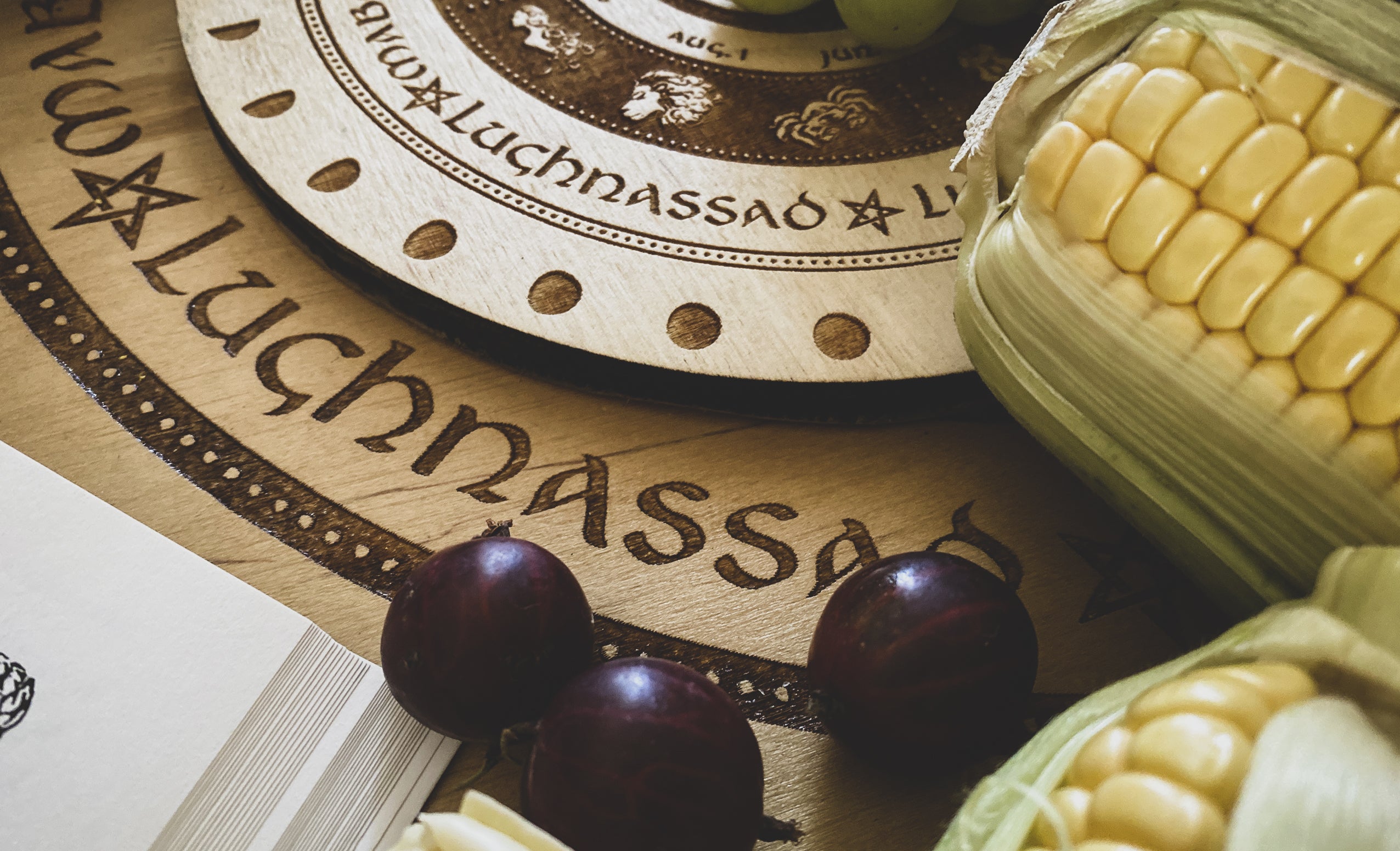
Litha - Summer Solstice
On June 21, Witches celebrate one of the eight Great Sabbaths, Litha. It is the festival of the summer solstice - the blossoming of life and the green, the longest day and shortest night of the year.
On this day, God is at the peak of his powers - from a youth he has turned into the man. He is seating on a wooden throne covered with green, while the Goddess is pregnant with new life. She holds his hand and smiles at this world. It is a day of the joy and fullness of life when night retreats for the last time to give the way to the bright sunshine.

But this holiday also has a grim side - the wheel of the year turns to a darker time. After Litha, the God and the Goddess will slowly fade and lose their powers, and the nights will become longer and colder. Only on Yule (the winter solstice), when the night seems almost to overtake the day it will lose again in a battle with the Sun. This holiday is widely popular around the world and celebrated in many different countries. It is known by various names: Alban Herween, Harvest Day, St. John's Day, Mother's Night, Summer Solstice Day.
The central symbol of Litha is fire, which gives strength and power to the sun. Traditionally, it was lit on the tops of the highest hills. As darkness falls, the fire receives the purifying and healing magical powers. The men and women, boys and girls, and even children jumped over the fires - and the higher the fire is, the greater effect it has the more vitality one receives.

The water is another important symbol of Litha. It was believed that in the daytime when the light of the sun reaches the rivers and lakes, it has healing powers and cleanses from negative energy.
The first sunbeam on the Summer Solstice was considered the most important moment of the celebration and was revered as sacred. By the way, the purpose of many stone circles and megalithic structures in Europe, Scandinavia, and even in the United States and Canada are connected with the dawn in the day of Litha.

Different herbs gain a magic power on the summer solstice. St. John's wort and other golden midsummer flowers are a symbol of the holiday. They bring back fertility, restore strength, and attract love. They are used to decorate a home or altar, or simply to make a wreath, or an accessory, that will be your talisman throughout the year until the next Midsummer.
Rituals on Litha are dedicated to life, the Sun, love, and prosperity. On this day, go to nature, gather herbs, praise life in its full bloom, arrange dances on the glade or the bank of ponds, bathe in a river or pond, and at night jump over a fire and burn healing herbs. God and the Goddess are happy, why not share their joy.

If you are celebrating Litha alone, take a walk to the nearest park or forest, pick some flowers, and let the sunshine down your body. Buy or pick by yourself some ripe berries and fresh fruits to eat in front of the altar. In the evening, you light candles, a fireplace, just or put dry herbs in a kettle and light them, and smoke your house to clear it from all negative energy of the last year. Do not forget to pamper yourself with goodies and you can even arrange some jumping over a fire - put a large candle in the center of the room and hop over its flame.
Flowers and herbs for Litha: chamomile, dill, elderberry, fennel, lavender, frankincense, St. John's wort, verbena, rose, myrrh, pine.
Stones: amber, carnelian, citrine, golden beryl, sunstone.
Daria Martina
© Pandora Witch Shop


3 comments
Bitcoin Recovery Testimonial
After falling victim to a cryptocurrency scam group, I lost $354,000 worth of USDT. I thought all hope was lost from the experience of losing my hard-earned money to scammers. I was devastated and believed there was no way to recover my funds. Fortunately, I started searching for help to recover my stolen funds and I came across a lot of testimonials online about Capital Crypto Recovery, an agent who helps in recovery of lost bitcoin funds, I contacted Capital Crypto Recover Service, and with their expertise, they successfully traced and recovered my stolen assets.
Their team was professional, kept me updated throughout the process, and demonstrated a deep understanding of blockchain transactions and recovery protocols. They are trusted and very reliable with a 100% successful rate record Recovery bitcoin, I’m grateful for their help and highly recommend their services to anyone seeking assistance with lost crypto.
Contact: Capitalcryptorecover@zohomail.com
Phone CALL/Text Number: +1 (336) 390-6684
Email: Recoverycapital@fastservice.com
Website: https://recovercapital.wixsite.com/capital-crypto-rec-1
Marcus Henderson
HIRE THE BEST BITCOINS RECOVERY EXPERT // THE HACK ANGELS
Please everyone should be careful and stop being fooled by all these brokers and account managers. I was scammed by a fake Bitcoin investment company online last month. I lost about $895, 000 to them and they denied all my withdrawal requests, and gave me all sorts of filthy requests. It was really hard for me because that was all my life savings. I found it very hard to move on, until I came across series of testimonies about THE HACK ANGELS RECOVERY EXPERT so I contacted him by using the address below:
WhatsApp +1(520)200-2320) or shoot them an email at
(support@thehackangels.com) They also have a great website at (www.thehackangels.com)
I got feedback after some hours and I was asked to provide all legal details, I did exactly what they instructed me to do without delay, to my greatest surprise I was able to recover my money back including my profit which my capital generated. I said I will not hold this to myself but share it to the public so that all scammed victims can get their funds back, you can as well hire him today. Hurry up and contact him and explain your situation to him he will help you in all crypto scam recovery funds, bitcoin scam recovery, investment scam, mobile spy, hacking contact THE HACK ANGELS RECOVERY EXPERT they are the best out there.
Terry Franco
This is beautiful information. If by chance, could you tell me the name of the book you are displaying on this page?
Gia
Leave a comment
This site is protected by hCaptcha and the hCaptcha Privacy Policy and Terms of Service apply.